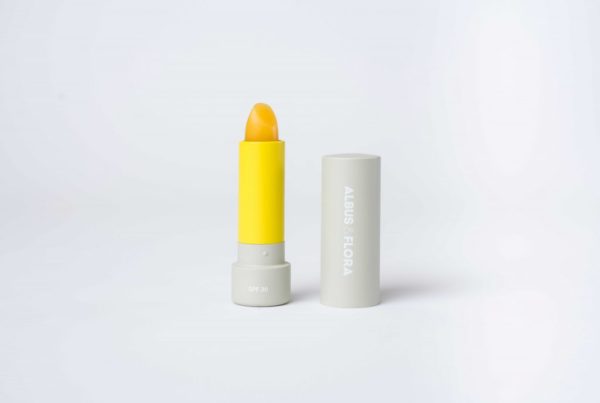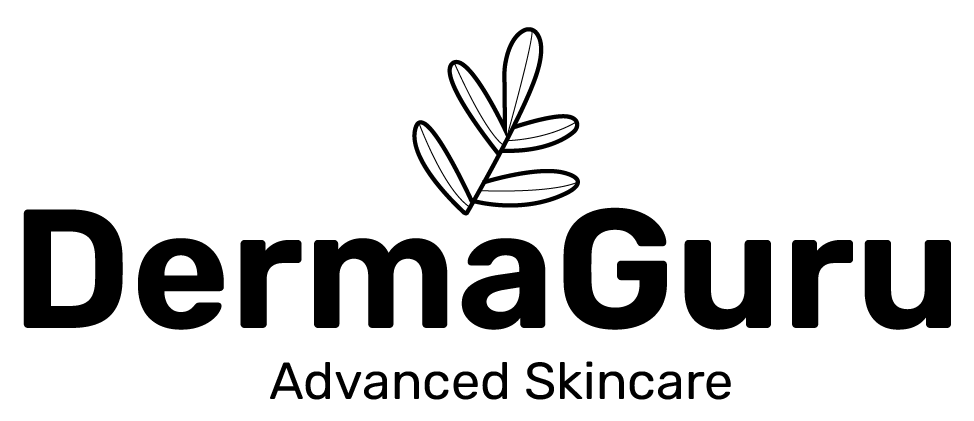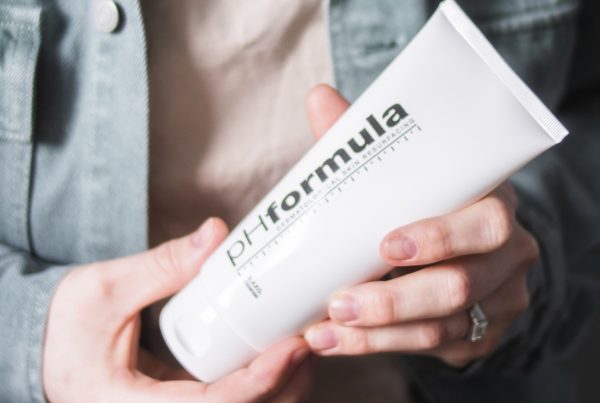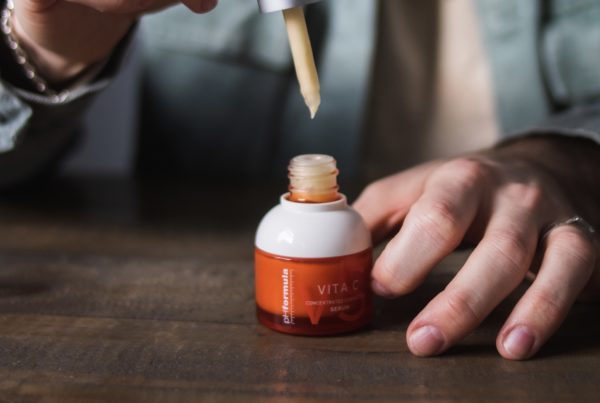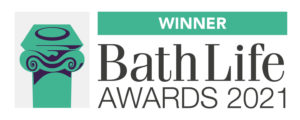Our Skin’s Anatomy
The skin is the largest organ in the human body, and it plays a critical role in protecting us from external threats, regulating body temperature, and sensing the environment around us. However, the skin is not a single, homogenous layer. Instead, it is made up of several layers that each have their own unique functions and properties. In this blog, we will take an in-depth look at the different layers of the skin and explore the ways in which they work together to keep our bodies functioning properly. From the epidermis, which serves as a barrier against harmful pathogens and UV rays, to the dermis, which contains the blood vessels, nerves and hair follicles, each layer of the skin plays an essential role in maintaining overall skin health and wellbeing.
The Epidermis:
The epidermis is the outermost layer of the skin, and it serves as a protective barrier for the body. It is made up of several layers, each with its own specific functions.
The top layer of the epidermis is called the stratum corneum. This layer is made up of keratinised (dead) skin cells that have transitioned to the surface of the skin. This layer of the epidermis helps to protect the body from the outside environment, helping to reflect UV rays and free radicals and also aiding in the retention of moisture in the skin.
The stratum lucidum is a thin, transparent layer of the epidermis that is found only in certain areas of the body, such as the palms of the hands and the soles of the feet. It is made up of dead skin cells, without nuclei, that have instead been filled with a clear protein called eladin. The stratum lucidum helps to protect the skin from abrasion and injury.
Below the stratum lucidum is the stratum granulosum, which is made up of cells that are in the process of dying. These cells are filled with keratin, a protein that helps to strengthen and protect the skin.
The next layer of the epidermis is the stratum spinosum. These cells are held together by tiny spines that attach to surrounding cells, providing structure – giving this layer it’s name.
The bottom layer of the epidermis is called the stratum germinativum (or basale.) This layer is made up of cells that are responsible for producing new skin cells, through a process called mitosis, to replace those that are lost from the surface of the skin – this process of creating and shedding is called desquamation. The stratum germinativum is in contact with the dermis, the layer of skin underneath the epidermis.
Alongside mitosis, the stratum germinativum also produces Melanocytes, Langerhan cells and keratinocytes. Melanocytes are responsible for producing the pigment melanin. Melanin gives colour to the skin and helps to protect it from the damaging effects of UV rays.
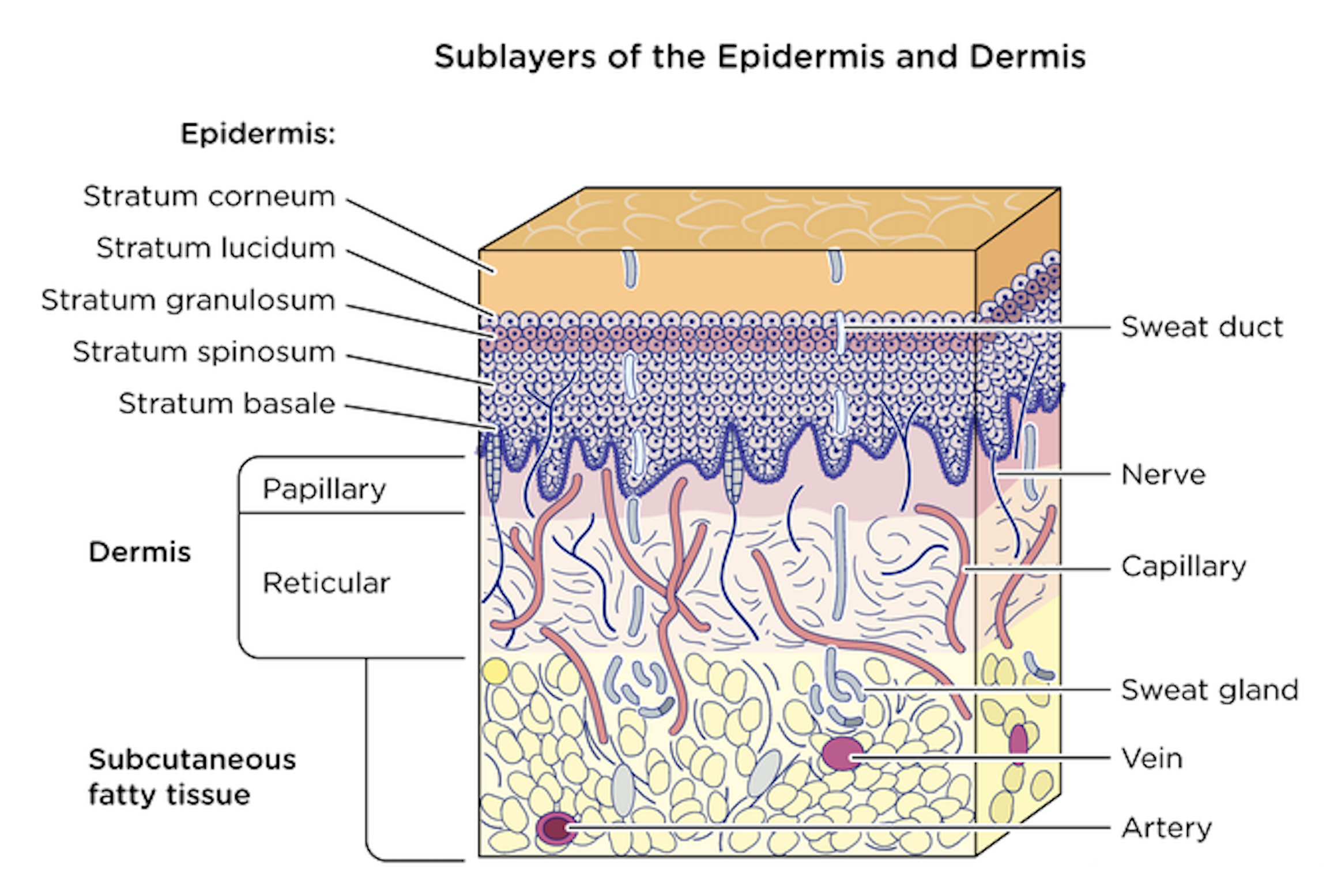
The Dermis:
The dermis is the middle layer of the skin, located between the epidermis (the outer layer of the skin) and the subcutis (the inner layer of the skin). It is a complex and vital structure that plays a number of important roles in the body. The dermis is made up of several different layers, each of which has it’s own specific functions and characteristics.
The top layer of the dermis is called the papillary layer. It is relatively thin, and is made up of a network of blood vessels and nerves. The papillary layer is responsible for providing the skin with nourishment and sensation. It is also home to a number of important cells, including dermal dendritic cells and Langerhans cells, which are involved in the immune response.
Beneath the papillary layer is the reticular layer, which is much thicker and more dense. This layer is composed of a network of collagen and elastin fibres, which give the skin its strength and elasticity. The reticular layer also contains a number of important structures, such as sweat glands, hair follicles, and oil glands, which help to regulate temperature and keep the skin moisturised.
Finally, there is the subcutaneous layer, which is the innermost layer of the dermis. This layer is composed of fat cells, which provide insulation and help to cushion the body. The subcutaneous layer is also home to a number of important blood vessels and nerves, which help to keep the skin healthy and well-nourished.
It is crucial that we nourish and preserve as much of this structure in our epidermis and dermis as possible, in not doing so we lose the crucial proteins that give us the healthy glow we spend so long trying to achieve. There are a number of treatments we can carry out to preserve and revitalise these structures…
The Subcutaneous Layer:
The subcutaneous layer of the skin, also known as the hypodermis, is located below the dermis and above the underlying muscle and bone. Composed mainly of fat and connective tissue, it serves several important functions. One of it’s primary functions is to provide insulation and energy storage for the body. The fat in the subcutaneous layer helps to regulate body temperature and protects the body from the cold, also helping to cushion the body and absorb shocks, which can protect the bones and joints from injury. This layer also helps to anchor the skin to the underlying tissue, and it contains blood vessels and nerves that provide nourishment and sensation to the skin.
Please Note:
All new clients must have a consultation with me before having any advanced treatments.
MEDICAL MICRO-NEEDLING COLLAGEN INDUCTION THERAPY
From £229
All needling options are bespoke to you using the correct transdermal solutions providing the best results. Alongside advanced LED light therapy to aid the healing process, note that it’s not just micro-needling alone it’s a full treatment aimed at providing you with the best results possible.
It can treat a range of skin problems from wrinkles and fine lines to enlarged pores and acne or chickenpox scars. It can also help repair sun damage to the face, pigmentation and even help with cellulite and stretch marks. We can tailor this kind of skin treatment to your exact needs. It is advisable to visit for a course of three to five treatments, spaced across four to six-week intervals. I will formulate a fully bespoke treatment plan for you upon consultation.
It is usual to expect some initial redness after treatment that will disappear after 48 hours. The effects of micro skin needling can last anywhere from two to three months after one treatment or have longer-term effects with a series of treatments.
Included:
-
Needling up to 1.5 mm depth
-
Transdermal solution
-
Advanced LED light therapy.
-
SOS calming mask
TCA TOUCH
£299 1 £807 3
TCA TOUCH™ is my most advanced chemical resurfacing treatment I offer otherwise know as a TCA Peel.
The TCA TOUCH™ is a revolutionary concept with intense stimulation and cell renewal, with the ability to control the penetration resulting in a unique non-aggressive and multi-functional treatment.
Trichloroacetic acid, otherwise known as TCA 30% concentration, results in intense stimulation and cell renewal with excellent skin tolerance and effectiveness. Combined with the unique delivery complex PH-DVCTM ensures the TCA molecules’ rapid delivery into the deeper layers with no superficial trauma and excellent skin tolerance.
Benefits
-
Instantly creates a lifting effect
-
Intense stimulation and cell renewal
-
Uniquely combined with Arbutin and Magnesium to enhance skin lightening properties
-
Suitable for all skin types
No risk of the following:
-
Post-inflammatory hyperpigmentation
-
Persistent erythema,
-
Peeling,
-
Lengthy downtime.
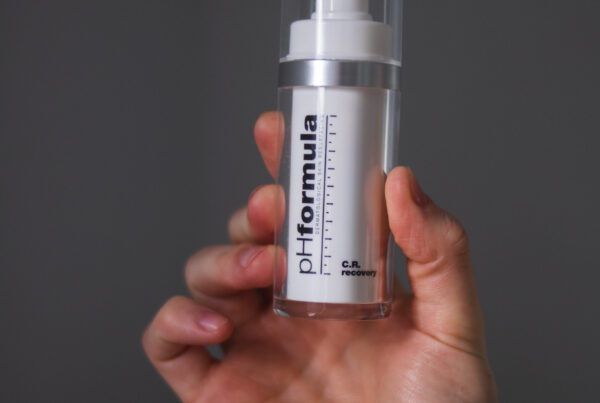
Retinol
